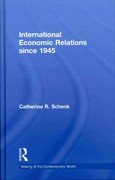Question
Question: 1) Please select all the valid statements about Public-Key Cryptography: a. Public-key encryption is more secure than secret-key encryption. b. Public-key encryption is asymmetric
Question:
1) Please select all the valid statements about Public-Key Cryptography:
a. Public-key encryption is more secure than secret-key encryption.
b. Public-key encryption is asymmetric encryption.
c. Public-key encryption is more efficient than secret-key encryption.
d. Distributing public keys is trivial.
2) Please select all the valid statements about the uses of public-key cryptosystems:
a. To provide authentication and digital signature, a receiver's public key is used to encrypt a message.
b. To provide authentication and digital signature, a sender's private key is used to encrypt a message.
c. To provide confidentiality, a sender's private key is used to encrypt a message.
d. To provide confidentiality, a receiver's public key is used to encrypt a message.
3) The essential public-key cryptography requirements basically state that a suitable trap-door one-way function is needed in a practical public-key cryptographic scheme.
a. True
b. False
4)In RSA, which of the following should not be known by attackers?
Value of n
Value of (n)
Value of e
Value of p or q
Value of d
5) In RSA, when the owner the key pair derives the private key d using the extended Euclid's algorithm with ax+by=1, which of the following statements about a, b, x, and y are valid:
a. a is n
b. b is e
c. b is (n)
d. a is (n)
e. x will be the derived private key d
f. y will be the derived private key d




Step by Step Solution
There are 3 Steps involved in it
Step: 1

Get Instant Access to Expert-Tailored Solutions
See step-by-step solutions with expert insights and AI powered tools for academic success
Step: 2

Step: 3

Ace Your Homework with AI
Get the answers you need in no time with our AI-driven, step-by-step assistance
Get Started


